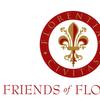Trio of Max Beckmann exhibitions debut this fall
- FRANKFURT, Germany
- /
- July 13, 2011
Three major exhibitons during the Autumn art season in 2011 will offer the unique opportunity to concentrate intensely on Max Beckmann’s oeuvre. In conjunction with the shows, three richly-illustrated Beckmann books will be published bringing together new scholarly insight into the work of this important artist.
"Beckmann & America” at Städel Museum, Frankfurt will be a major exhibition devoted to the late work of this European painter. Max Beckmann (1884–1950) moved to the United States in the late summer of 1947. He would spend the last three years of his life far away from Europe, years that signified a liberating, intense new start for him. The vastness of the foreign continent, its coasts, the atmosphere of its “wild” landscapes, and its big cities all formed a palpable source of inspiration for Beckmann, who had never before had this type of physical experience of space. Working with incredible energy and productivity, Beckmann produced numerous major works in these few short years. From today’s perspective, Beckmann’s independence is all the more impressive when seen in relation to the development of abstract art that was taking place in America at the same time. Beckmann retained his link to representationalism and its metaphorical themes, yet still managed to assert himself as a European painter of international status.
Kunstmuseum, Basel will show highlights from the master’s oeuvre—his landscapes. Max Beckmann is one of the titans of modern art, although he considered himself the last of the Old Masters. This publication examines the artist’s landscape paintings, which are not characterized by layers of allegorical meaning, as are his works in other genres, and their splendid painterly qualities are instantly perceptible. One of the foundations for these landscapes is the potent experience of nature. Personal objects belonging to Beckmann frequently appear in the foreground, like remnants of still lifes, making the viewer aware of the artist’s presence. On the other hand, the paintings are realistic reproductions of places he visited, for which Beckmann also made reference to photographs or postcards. A third artistic idea came from art itself: flashes of Beckmann’s immense knowledge of art history can be seen in his citations of other works. Thus, his landscapes can be regarded as a kind of summation of his understanding of the world.
Museum der Bildenden Künste, Leipzig will show how in his portrait paintings, Max Beckmann (1884–1950) reflects on a very personal web of relationships—to his family, his wives, and his large circle of friends and acquaintances. The publication features approximately 150 expressive paintings and works on paper, assembling a Who’s Who of people in Beckmann’s life. The artist also assigned roles in his allegorical world theater to his family and friends, and so this book also presents pictures in which the Beckmann integrated his “collection of portraits.” Furthermore, a biographical lexicon put together by Felix Billeter and Christiane Zeiller lists around 240 people whose paths crossed Beckmann’s at various stages. Mayen Beckmann, the artist’s granddaughter, provided substantial assistance to the authors in their task.
















